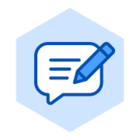Hey everyone! Alright, so we all know how crucial documenting technical requirements is. When you’re working on product development and UX design, it’s easy to get lost in the weeds of a project. Plus, there are often so many talented team members coming from diverse backgrounds (engineers, designers, product managers, etc.), and it’s important to make sure they’re all on the same page.
So, with that in mind, we want to know your workflows for documenting technical requirements!
On our teams at Lucid, we (roughly) follow these three steps:
- Product and design teams use wireframes to visualize desired experiences. This also helps engineers understand the project and identify the technical systems that will be affected.
- Then the engineers create data flows and visualize architecture in Lucidchart. They can automatically generate UML or ER diagrams to quickly visualize plans.
- From there, engineer teams can align and relay technical requirements. Using the product diagrams as a reference, engineering and design can come together to clarify complex systems and align on UX solutions all in one place.
Check out more ways our product and UX teams use Lucid.
Do your teams follow a general process for documentation? What are your best tips for creating great documentation? Share all the details in the comments below! 👇



